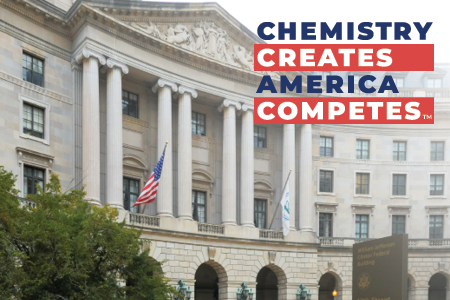The passage of the 2016 amendments to TSCA was a watershed moment. Those amendments, known as the Frank R. Lautenberg Chemical Safety for the 21st Century Act, were the result of years of work and negotiations between lawmakers of both parties, as well as extensive engagement by stakeholders from industrial, environmental, public health, animal rights, and labor organizations. The law passed both House of Congress with overwhelming bipartisan support, and it was the first major update to any environmental law in 40 years.
Toxic Substances Control Act (TSCA)

Effective and efficient scientific-based and risk-based implementation of the Toxic Substances Control Act (TSCA) is critical to health & safety, innovation, the supply chain, and the U.S. economy.
Applying best available science: EPA decisions must be based on real exposure scenarios, use the most relevant science information, adhere to statutorily mandated TSCA science standards, and stop overestimating risk.
Conducting timely new chemical reviews: EPA’s process for reviewing new chemicals must be timely, transparent and allow for regular communication.
Assessing each condition of use: EPA’s regulatory determinations must be based on the how the chemical is used, real world exposure, conditions of use and the safety protocols in place.
Improving communication: EPA must enhance its communication with manufacturers, update its processes to be transparent and objective, and ensure that relevant information from actual use and exposures is adequately incorporated during the process.
Key features of TSCA include:
- Strengthening protections for the most vulnerable like infants, children, and the elderly
- Requiring EPA to use the best available science and base its testing, prioritization, and risk evaluation decisions on the weight of the scientific evidence
- Requiring EPA to make decisions based on risk, meaning that hazards, use, and exposure will be considered when determining if a chemical can be used safely
- Subjecting all new and existing chemicals to an EPA safety review
- Requiring EPA to focus on chemicals that are the highest priorities for full risk-based safety assessments
- Strengthening transparency and the quality of science used to make EPA decisions
- Expanding EPA’s ability to require additional health and safety testing of chemicals
- Allowing industry to request that EPA conduct a safety assessment on a specific chemical
- Providing EPA with a full range of options to address the risks of substances including labeling requirements, use restrictions, phase-outs, or other appropriate actions for any chemical found to present an unreasonable risk
- Promoting cooperation between state and federal regulators while creating a strong national chemical regulatory system, ensuring interstate commerce is not disadvantaged
- Protecting Confidential Business Information
